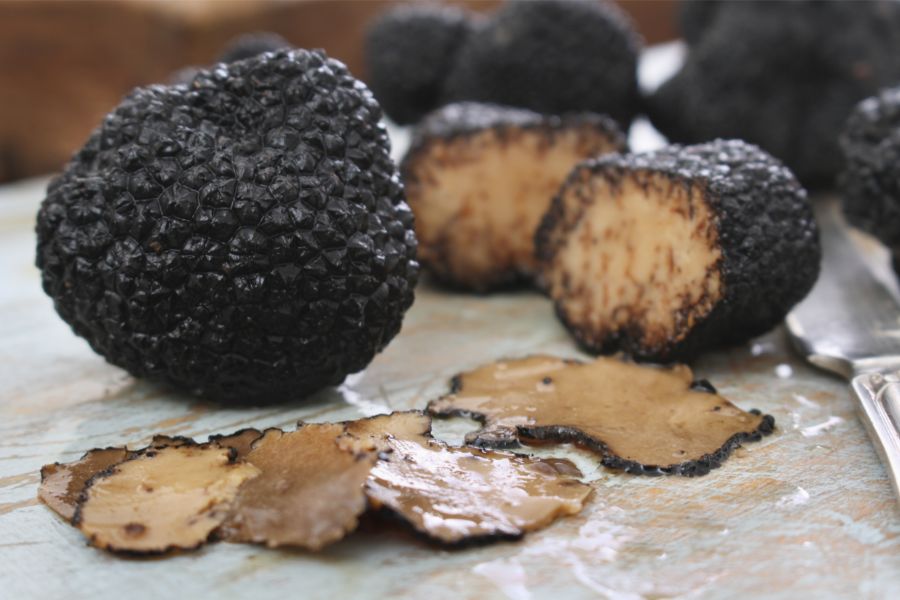Tennessee holds a delicious secret hiding beneath its rolling hills and wooded valleys. Buried underground near tree roots, valuable truffles are quietly growing in several spots across the state. These prized fungi can sell for hundreds of dollars per pound, making them one of nature’s most expensive treasures.
You might think truffles only grow in fancy places far away, but Tennessee’s climate and soil create perfect conditions for these earthy gems. The state’s oak and hickory forests provide exactly what truffles need to thrive. Many people walk right over these valuable mushrooms without ever knowing they’re there.
Finding truffles takes special skills and often a trained dog with a powerful nose. These underground treasures don’t pop up like regular mushrooms you see after rain. Instead, they stay hidden beneath the soil, waiting for someone who knows where to look.
Tennessee truffle hunters are part of a growing community discovering that their home state can produce world-class fungi.
What We Cover In This Article:
- What Wild Truffles Look Like
- Truffle Lookalikes To Avoid
- Best Practices For Finding Truffles
- Where You Can Find Truffles Around The State
- Other Great Locations For Truffles
- When The Best Time Of The Year Is To Find Truffles
- The extensive local experience and understanding of our team
- Input from multiple local foragers and foraging groups
- The accessibility of the various locations
- Safety and potential hazards when collecting
- Private and public locations
- A desire to include locations for both experienced foragers and those who are just starting out
Using these weights we think we’ve put together the best list out there for just about any forager to be successful!
A Quick Reminder
Before we get into the specifics about where and how to find these plants and mushrooms, we want to be clear that before ingesting any wild plant or mushroom, it should be identified with 100% certainty as edible by someone qualified and experienced in mushroom and plant identification, such as a professional mycologist or an expert forager. Misidentification can lead to serious illness or death.
All plants and mushrooms have the potential to cause severe adverse reactions in certain individuals, even death. If you are consuming wild foragables, it is crucial to cook them thoroughly and properly and only eat a small portion to test for personal tolerance. Some people may have allergies or sensitivities to specific mushrooms and plants, even if they are considered safe for others.
The information provided in this article is for general informational and educational purposes only. Foraging involves inherent risks.
What Wild Truffles Look Like
The U.S. is home to several native truffle species that grow wild in forests across the country. Each one has its own unique scent, appearance, and preferred habitat. Here are the types of truffles you can find:
Oregon Black Truffles (Leucangium carthusianum)
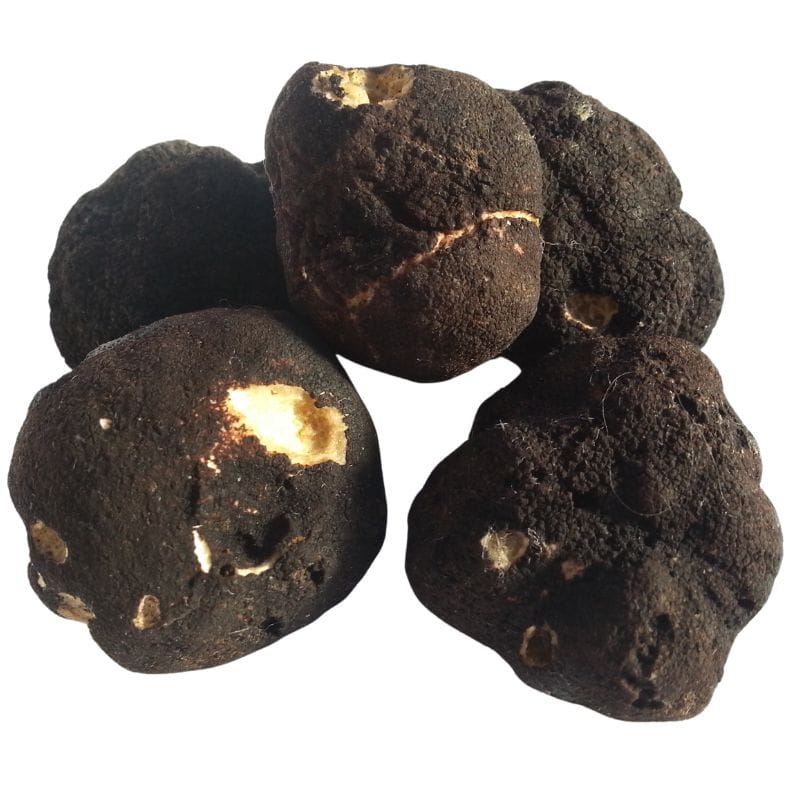
Leucangium carthusianum, also called the Oregon black truffle, grows in the Pacific Northwest and usually shows up around Douglas-fir trees. It’s a native species and one of the more well-known edible truffles from the region.
On the outside, it looks like a small lump of coal—dark black, kind of lumpy or warty, and sometimes slightly smoother in spots. They’re usually about the size of a golf ball, but they can be smaller or larger depending on the season.
Inside, the truffle is firm with a marbled pattern of gray and white veins running through it. When it’s fresh, it smells fruity, almost like pineapple, but the scent gets stronger and muskier as it ripens.
If you’re out looking for them, check in moist, shady forests with soft, loamy soil, especially where there’s a lot of moss or ferns. They grow just below the surface, so people often use trained dogs to help sniff out the ripe ones.
Compared to the Oregon white truffle, which is lighter in color and has a sharper, garlicky aroma, the black truffle has a deeper, more earthy smell. It’s also bigger and firmer than the southern U.S. truffles like Tuber lyonii, which tend to be smaller, paler, and grow around hardwoods like oaks and hickories.
Oregon Winter White Truffles (Tuber oregonense and Tuber gibbosum)
Oregon has two native white truffles that are starting to get more attention: the Oregon Winter White Truffle (Tuber oregonense) and the Oregon Spring White Truffle (Tuber gibbosum). They grow underground in forests and are prized for their strong, savory aroma.
From the outside, these truffles are small, roundish, and kind of bumpy, usually pale beige to light brown. Cut one open, and you’ll see a white interior that darkens with age, showing off a web of white veins when it’s fully mature.
The Winter White Truffle pops up from late fall into February, while the Spring White starts showing up around January and can last into June. They’re pretty similar, but the Winter variety is known for having a more powerful scent and flavor.
To find them, you’ll want to look in forests with younger Douglas-fir trees on the west side of the Cascades. Truffle hunters often check for loose soil or spots where animals have been scratching, which can be a sign there’s something below.
When fully ripe, both types give off a bold smell that’s often compared to garlic, cheese, or earthy spices. They’re usually served raw, shaved over dishes to add that truffle kick without losing any of the aroma.
Appalachian Truffle (Tuber canaliculatum)
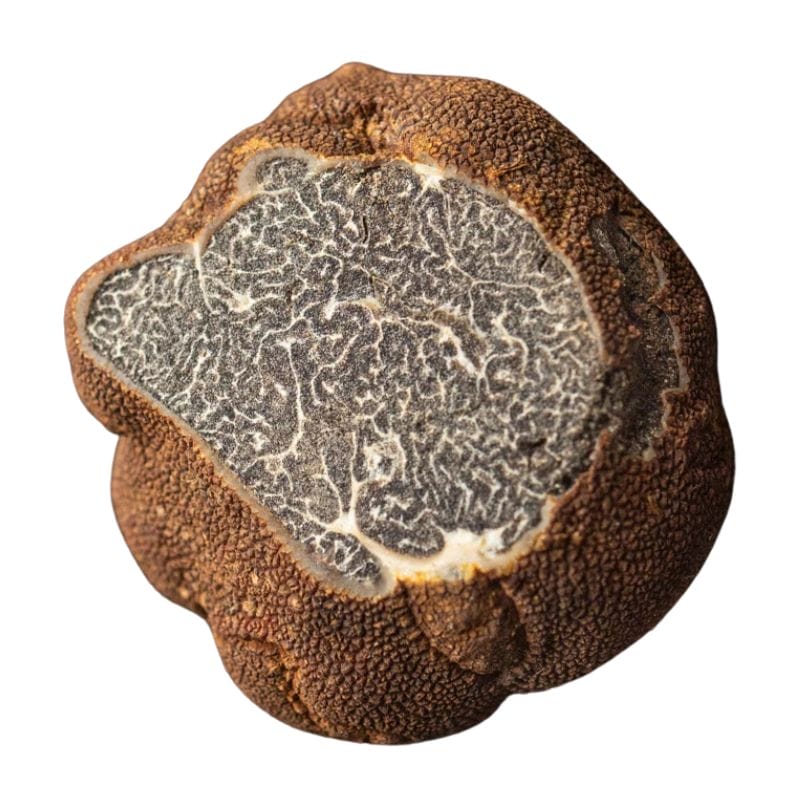
The Appalachian truffle, also known as Tuber canaliculatum, is a native North American truffle that’s slowly getting noticed. It’s about the size of a walnut and has a reddish-brown, bumpy outer surface that looks kind of like a rough, warty potato.
When you cut it open, the inside is firm and dark brown with thin white veins running through it like a marbled pattern. If it’s fully ripe, the smell is strong and earthy—some say it has a kind of nutty, funky aroma that stands out.
You can find these truffles in mixed hardwood forests, especially around oaks and pines, from late summer through fall. They grow underground, so look for spots where the soil is loose and animals like squirrels have been digging—sometimes that’s a good clue.
If you’re foraging, gently raking the top layer of soil near tree roots can help, but a trained dog or even a good nose makes it way easier. Once you know what to look for, the reddish color and bumpy skin are good signs you’ve found the right thing.
Compared to truffles like Tuber oregonense or Leucangium carthusianum, Tuber canaliculatum is more subtle in every way. Its smaller size and lighter scent mean you have to pay closer attention when foraging.
It’s also not as popular in the culinary world because it doesn’t pack the same punch in terms of flavor or aroma. Still, finding one can be rewarding, especially if you’re exploring different types of fungi in the area.
Desert Truffle (Terfezia and Tirmania spp.)
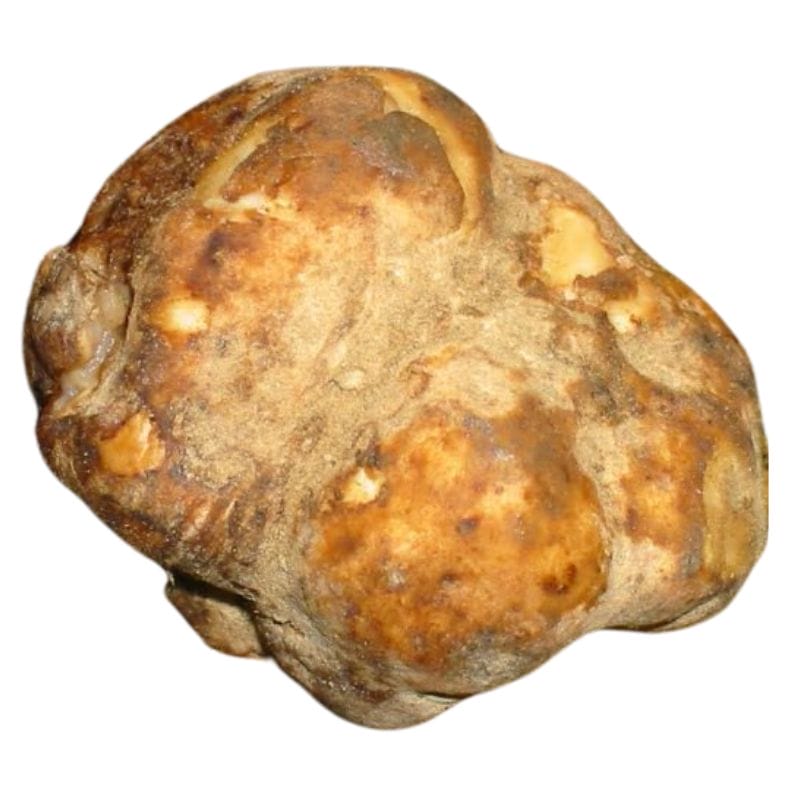
Terfezia and Tirmania are two types of truffles that are sometimes called desert truffles. These are a bit different from the truffles we usually think of, with their bold flavors and rich aromas.
These ones are a little more understated, but they’re fascinating in their own right. What makes them stand out is their ability to thrive in dry, harsh environments where you wouldn’t expect something so delicate to grow.
Unlike the earthy, intense aroma of black or white truffles, Terfezia and Tirmania truffles have a milder scent and flavor. They’re often described as nutty, with a hint of sweetness, but they lack the strong garlicky or musky notes you might associate with other truffles.
Their texture is also different—more firm and less oily than what you’d find with species like Tuber oregonense. They might not have the same culinary punch, but they’re still prized in traditional dishes, where their subtle flavors shine in simpler recipes.
When it comes to appearance, they’re easy to spot once you know what you’re looking for. They’re round to slightly irregular in shape, and their color can range from light beige to a reddish-brown, depending on the species.
The surface is usually smooth or slightly textured, without the rough, knobby look of a black truffle. Cut one open, and you’ll see a pale interior that’s often uniform in color, lacking the intricate veining you’d see in something like Leucangium carthusianum.
Pecan Truffle (Tuber lyonii)

Tuber lyonii, also known as the pecan truffle, is a native North American truffle that grows underground near the roots of pecan trees. You’ll mostly find it in the southeastern U.S., especially in states like Texas, Georgia, and Mississippi.
On the outside, pecan truffles are round to lumpy and have a smooth, light brown skin that darkens as they age. They’re usually about the size of a marble or golf ball, and sometimes they even poke up slightly through the soil surface.
If you slice one open, the inside has a pretty marbled look—light tan streaks mixed with darker brown, almost like wood grain. The smell is earthy, nutty, and kind of warm, especially when they’re fully mature.
When you’re out looking for them, check under mature pecan trees or other hardwoods like oaks and hickories. Trained dogs can help sniff them out, but people sometimes spot them by looking for little cracks in the soil or raised areas near the tree’s base.
Compared to other U.S. truffles like the Oregon white truffle or the Appalachian black truffle, pecan truffles have a milder flavor and are more common in orchards. They’re a solid option in the kitchen—freshly sliced over pasta or mixed into butter—and they don’t come with the high price tag of their European cousins.
Truffle Lookalikes To Avoid
When you’re out hunting you also need to know about a few different fungi species that look very similar to the delicious truffles we’re after but are either inedible or not worth eating. Keep an eye out for:
Pine Truffles (Geopora cooperi)
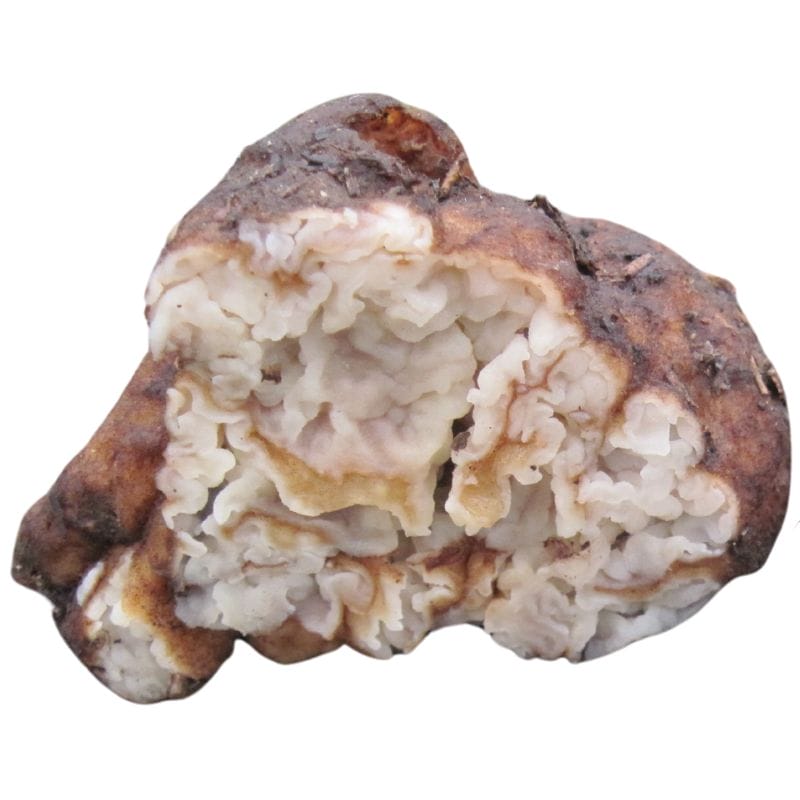
Geopora cooperi is a fungus that can easily confuse someone new to truffle hunting. It’s sometimes called the pine truffle because it grows underground like a true truffle and often pops up near certain trees.
At first glance, it might seem like you’ve hit the jackpot, but this one is a false truffle, not something you’d want to eat or sell.
The easiest way to tell Geopora cooperi apart from real truffles is by looking closely at its structure. While true truffles have a smooth or slightly knobby exterior and a marbled interior, Geopora cooperi has a rougher, more irregular outer surface.
When it matures, it sometimes splits open, revealing a cup-like shape, which true truffles never do. Inside, it’s less dense and doesn’t have the intricate veining that makes real truffles so unique.
Another big difference is the smell. True truffles have a strong, rich aroma that’s earthy, sweet, or garlicky, depending on the species. Geopora cooperi, on the other hand, has a much weaker scent, and it’s not as pleasant or distinctive.
If you’re relying on aroma to identify your find, this one will give itself away pretty quickly. So, while it might look similar at first, a closer inspection will show it’s not the culinary treasure you’re hoping for.
Stinking Slime Truffle (Melanogaster ambiguus)
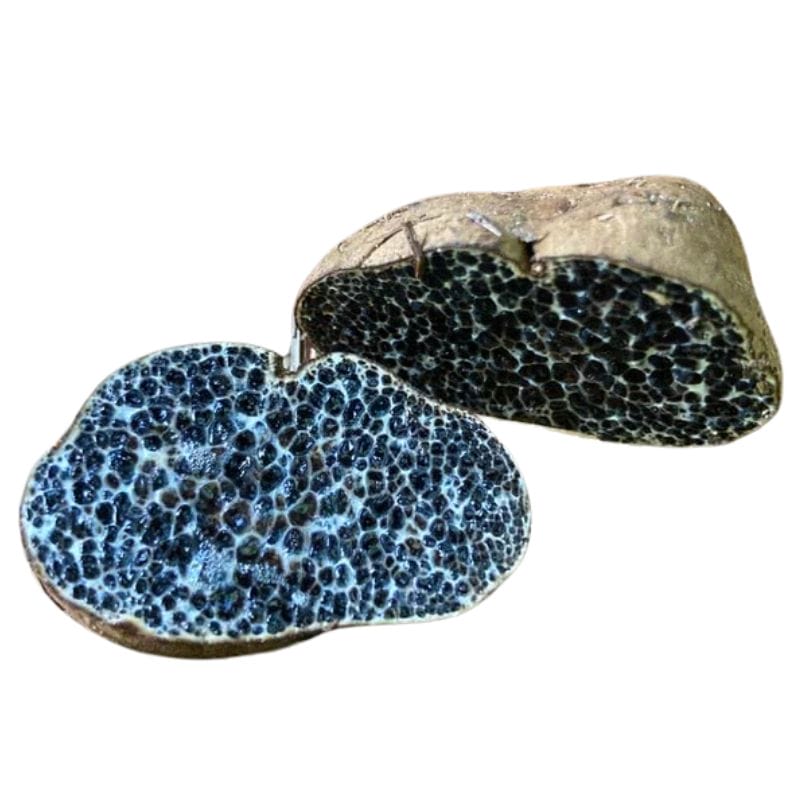
Melanogaster Ambiguus, because of their reddish-brown to dark brown exterior, might look like true truffles at first glance, but they’re quite different when you know what to look for.
The key difference is on the inside. When you cut open Melanogaster ambiguus, the interior is filled with flattened cells that have a shiny black gelatinous feel to them. Real truffles, on the other hand, have those beautiful marbled veins running through their flesh, almost like a web.
Another giveaway is the smell. While real truffles have a rich, earthy aroma that’s mouthwatering, Melanogaster ambiguus tends to have a much stronger, almost unpleasant odor—it’s not something you’d want to sprinkle on your pasta.
Earthballs (Scleroderma)
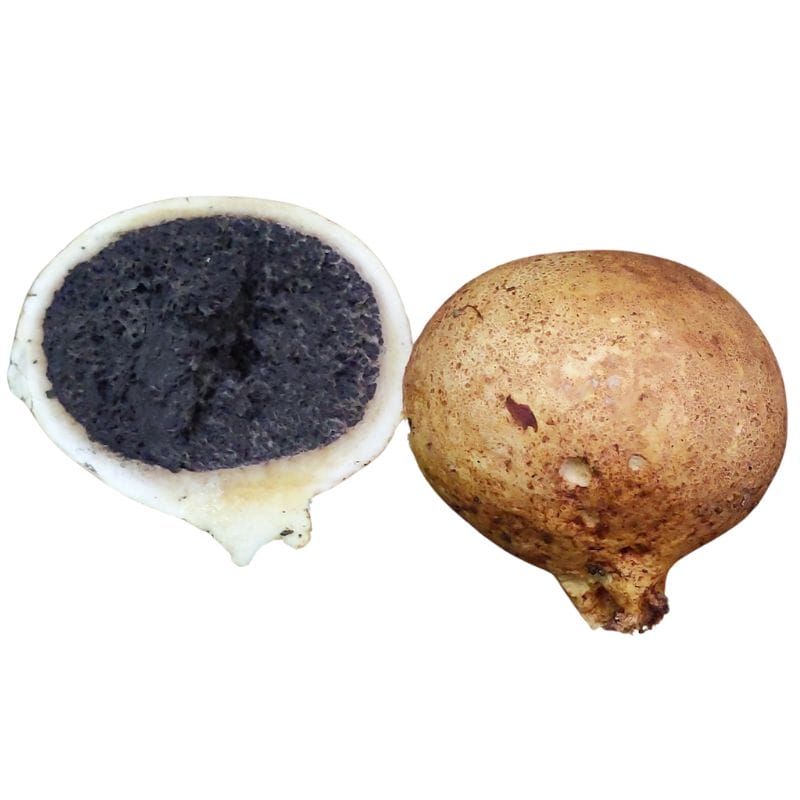
Scleroderma, commonly called earthballs, can easily fool someone who’s just starting out because they grow underground and have a round shape similar to truffles. But don’t be tricked—Scleroderma is not a true truffle, and it’s actually toxic, so it’s important to know how to tell the difference.
The first thing you’ll notice is the outer skin, which is thicker and tougher than that of most truffles. It can range in color from yellowish to dark brown, often with a rough or cracked texture.
If you cut it open, the difference becomes even clearer. While true truffles have a marbled interior with delicate white veins, Scleroderma starts out with a whitish inside that quickly darkens as it matures, turning black or purple with no marbling. It’s dense and solid, almost like charcoal in the later stages.
Another big giveaway is the smell. True truffles have a rich, earthy aroma that makes them so prized, while Scleroderma has little to no pleasant scent—some even describe it as musty or unpleasant.
Deer Truffles (Elaphomyces)
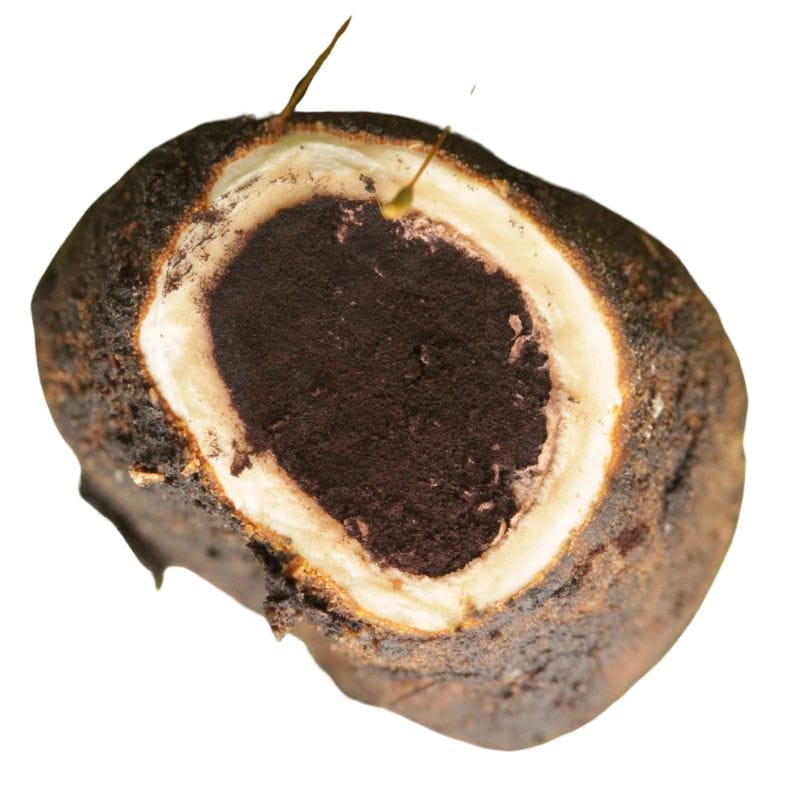
Elaphomyces, also known as deer truffles, look like true truffles at first glance, but they’re a whole different story. They’re called deer truffles because wildlife, especially deer and rodents, love to eat them. For us humans, though, they’re not edible—and definitely not what you want to mistake for a prized truffle.
Here’s how you can tell Elaphomyces apart from the real thing. First, they have a tough, warty outer surface that can range from pale tan to black, depending on the species and their age.
When you cut them open, the inside is solid and sometimes speckled or marbled, but not in the delicate, vein-like pattern you’d see in true truffles.
Their smell is also a big giveaway. Instead of the rich, earthy aroma of an edible truffle, Elaphomyces either has little scent or an odor that’s earthy but not particularly appealing.
Another thing to know is that Elaphomyces often grows deeper in the soil than true truffles, and they tend to have a harder, woodier texture.
Best Practices For Finding Truffles
Truffle hunting can be a rewarding adventure if you know the right tips and tricks. Here’s what you should keep in mind to improve your chances of finding these underground treasures:
Wait 10 to 14 Days After Heavy Rain
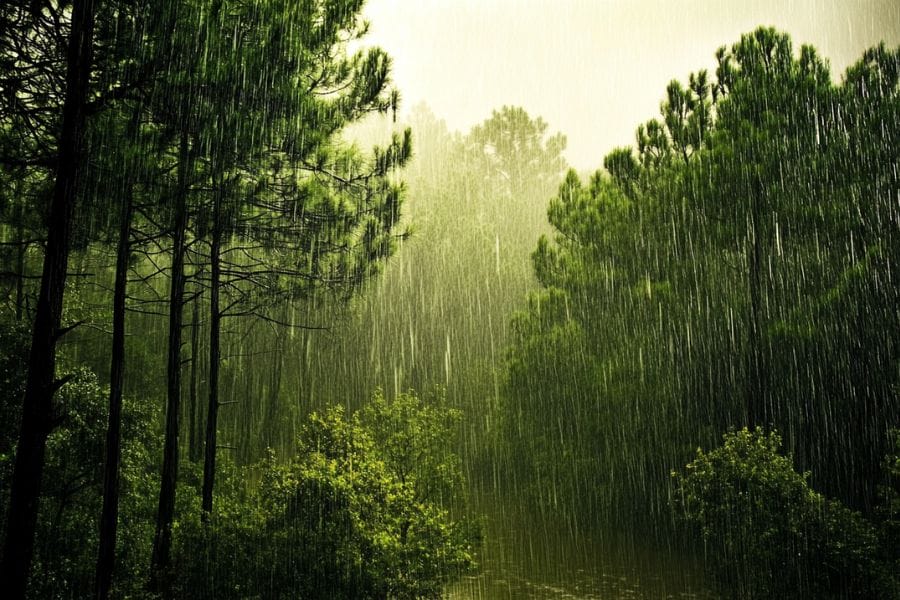
After a heavy rain, it’s best to wait about 10 to 14 days before heading out. This gives the truffles time to mature and release their signature aroma, making it easier for you (and your dog) to sniff them out. Rain helps truffles grow, but they don’t start giving off their scent right away.
As the soil warms up, the truffles get more aromatic, and the ground becomes looser, which makes digging easier without disturbing the environment too much. The timing is perfect to find truffles at their best—both in quality and in how easy they are to locate.
Find the Right Trees
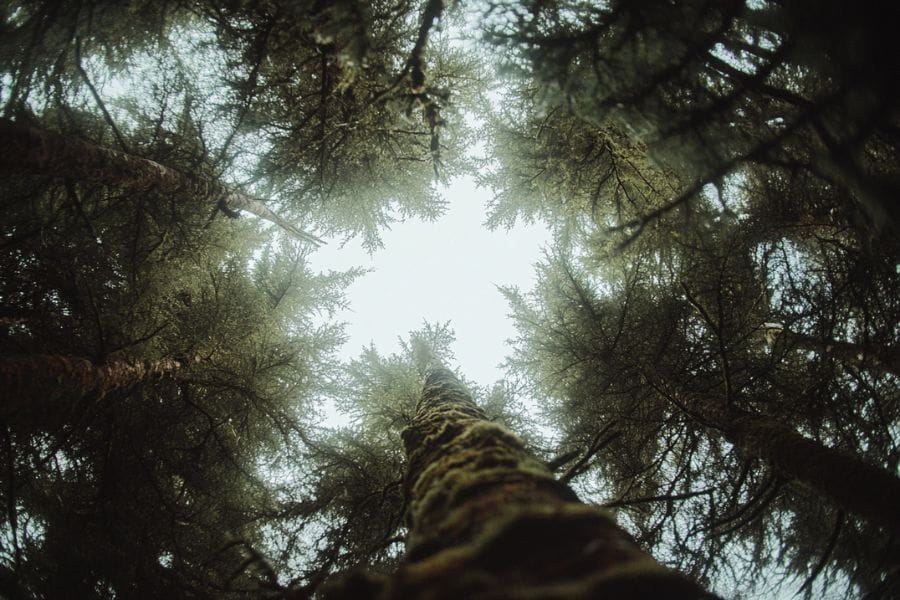
Truffles don’t grow just anywhere—they have a special relationship with certain trees. You won’t find them under just any tree, so knowing which ones to look for can make all the difference. Some of the best trees to look out for are:
- Pines
- Douglas-firs
- Oaks
- Hazelnuts
- Cypresses
- Willows
For example, if you’re looking for Oregon white truffles, keep an eye out for Douglas-fir trees. California black truffles, on the other hand, are often found near oaks and hazelnuts. The soil around these trees also needs to be slightly alkaline, so it helps to know what kind of ground you’re walking on as well.
Watch for Wildlife Activity
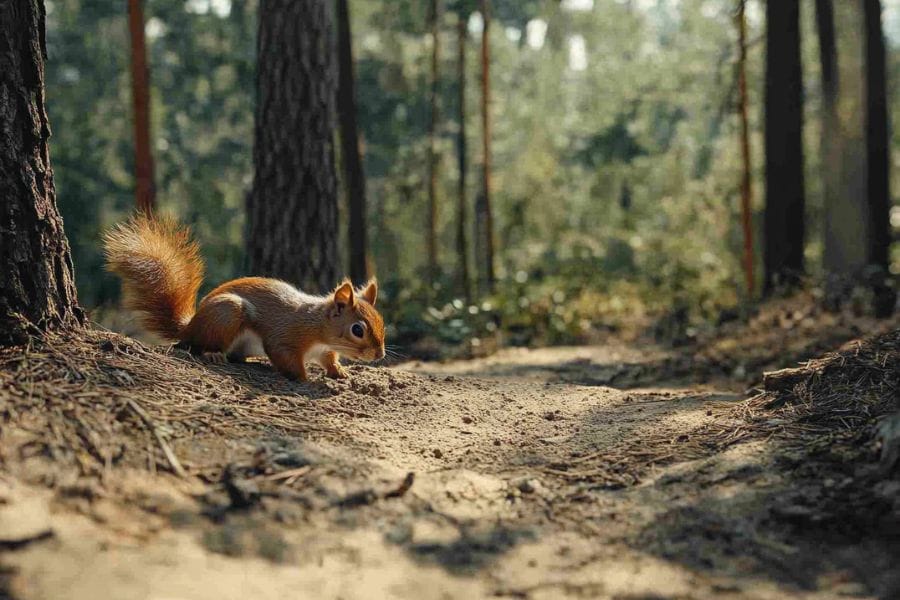
Animals like squirrels and chipmunks often help spread truffle spores, and sometimes their digging can lead you straight to truffles. While you won’t always find truffles in every pit animals dig (they also look for things like acorns or bulbs), fresh digs are a good clue. The more recent the pit, the better chance it has of leading to truffles.
Even though animals are a part of the truffle cycle, most hunters prefer using dogs to find the real treasure underground. Dogs have an incredible nose for truffles and can pinpoint their location much more reliably than any squirrel or chipmunk.
Get a Little Help from a Truffle-Hunting Dog
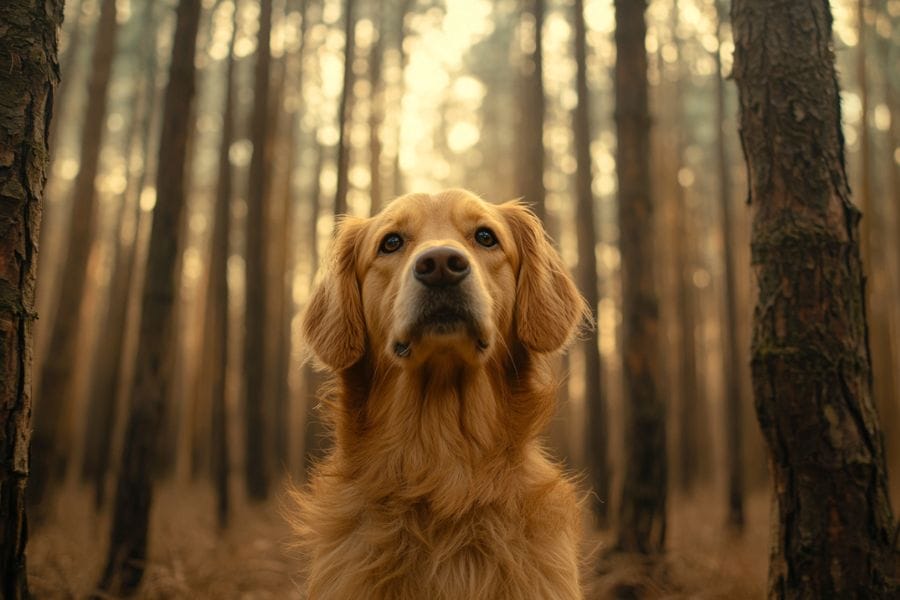
If you’re serious about truffle hunting, a trained dog can make your life a whole lot easier. Their sense of smell is extraordinary, and they’re trained to find mature truffles buried beneath the surface. Many truffle hunters swear by their dogs, and for good reason—they’re much more accurate than humans when it comes to sniffing out truffles.
If you don’t already have a trained dog, you can connect with local foraging groups or specialized trainers who offer truffle-hunting services. Some places even host events where you can see experienced handlers with their dogs in action. And if you’re feeling adventurous, you can train your own dog using truffle-scent kits and practice in a controlled space before hitting the woods.
Before you head out
Before embarking on any foraging activities, it is essential to understand and follow local laws and guidelines. Always confirm that you have permission to access any land and obtain permission from landowners if you are foraging on private property. Trespassing or foraging without permission is illegal and disrespectful.
For public lands, familiarize yourself with the foraging regulations, as some areas may restrict or prohibit the collection of mushrooms or other wild foods. These regulations and laws are frequently changing so always verify them before heading out to hunt. What we have listed below may be out of date and inaccurate as a result.
Where You Can Find Truffles Around The State
Now we’re going to go over five of the best locations for finding truffles. We’ll go a bit in-depth here and then provide a much longer list of other spots to try.
Great Smoky Mountains National Park
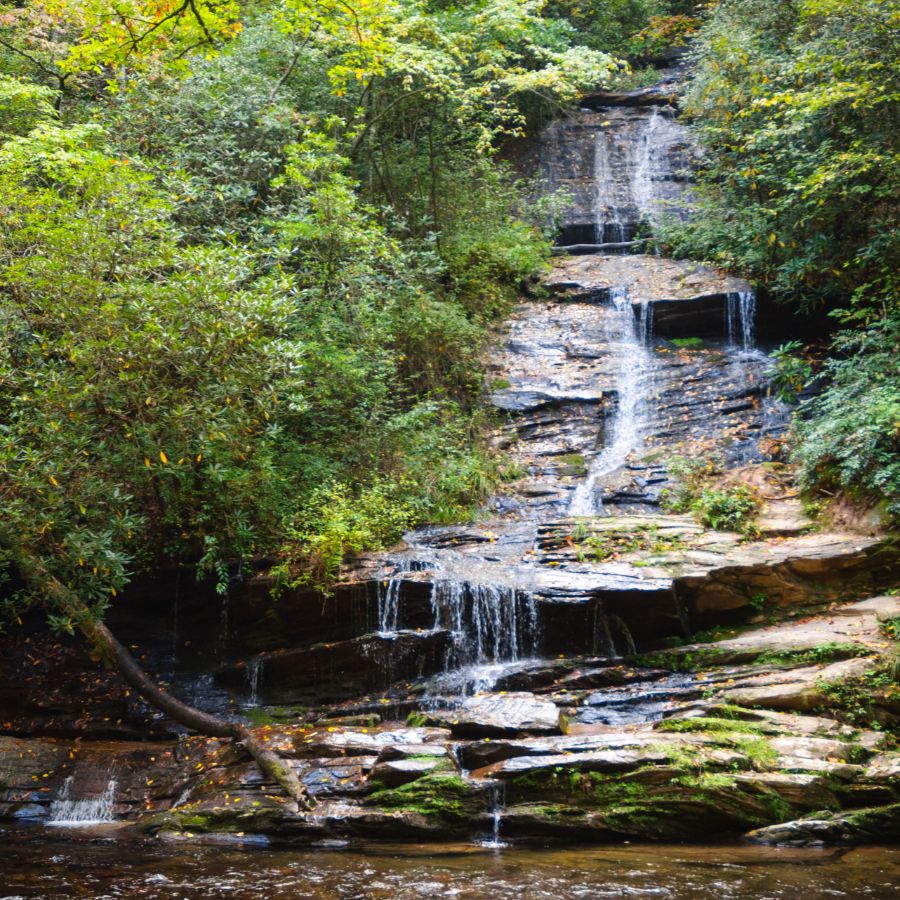
The Great Smoky Mountains National Park spans across Tennessee and North Carolina, creating one of America’s most biodiverse wilderness areas. This ancient mountain range contains over 800 square miles of protected forests.
The diverse hardwood forests here provide excellent conditions for truffle growth throughout the region. Oak, hickory, and beech trees dominate many areas of the park. These trees form the mycorrhizal relationships that truffles need to thrive.
Look for truffles near the base of mature oak trees, especially in areas where the soil appears disturbed by wildlife. The Cataract Falls area offers particularly good hunting grounds with its mix of hardwoods and moist soil conditions.
Cherokee National Forest
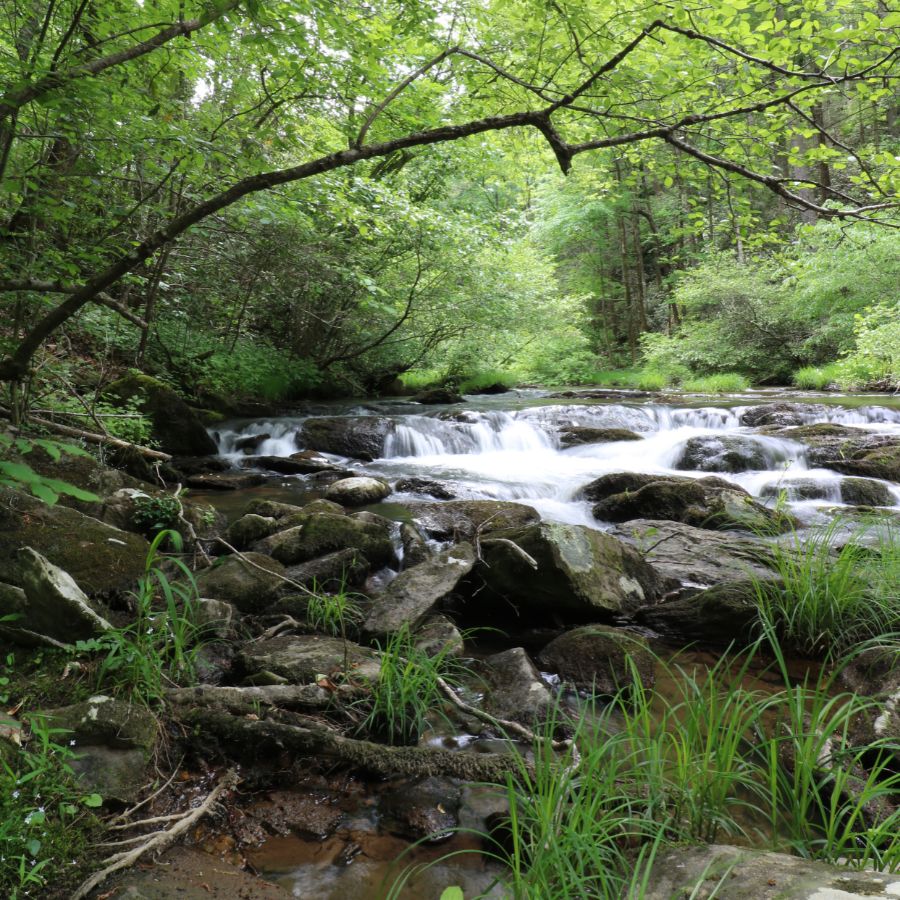
Cherokee National Forest covers over 650,000 acres across eastern Tennessee’s rugged landscape. The forest provides habitat for countless plant and animal species while offering outdoor recreation opportunities.
Search along old logging roads where soil compaction creates unique growing conditions for certain truffle types. Look beneath tulip poplar groves in areas with good drainage but consistent moisture. The Ocoee River corridor provides excellent hunting opportunities with its rich alluvial soils.
Mixed hardwood stands throughout the forest create ideal environments for various truffle species to develop. The forest’s elevation changes result in different soil types and moisture levels. Many areas remain relatively undisturbed, allowing natural ecosystems to flourish.
Natchez Trace State Park
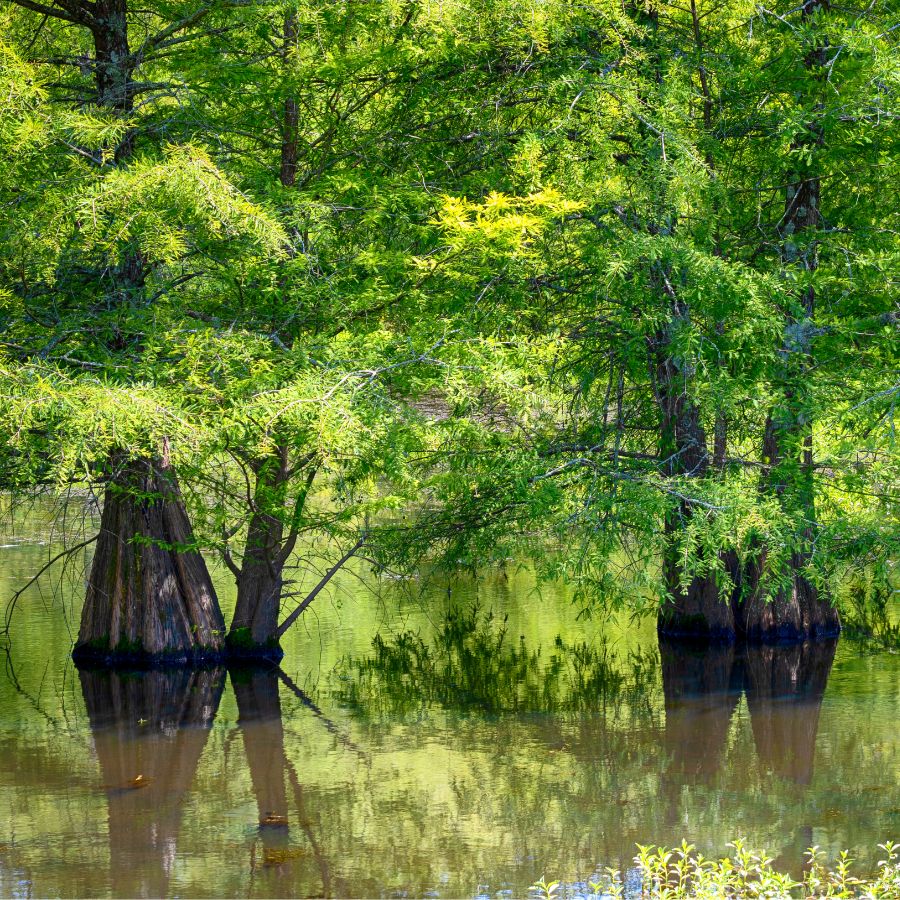
Sweet gum, oak, and maple trees are abundant throughout different sections of Natchez Trace State Park. The soil here tends to be more alkaline than in other parts of Tennessee. This pH balance creates favorable conditions for specific truffle varieties that prefer less acidic environments.
The park encompasses over 48,000 acres in west-central Tennessee. Rolling hills, dense forests, and numerous streams characterize this beautiful landscape. The park preserves a section of the historic Natchez Trace while protecting diverse natural habitats.
Focus your truffle-hunting efforts around the edges of clearings where forest meets open space. Check near the park’s numerous small creeks where moisture levels remain consistent. The Pin Oak Lodge area contains mature hardwood stands that have been undisturbed for decades.
Big South Fork National River
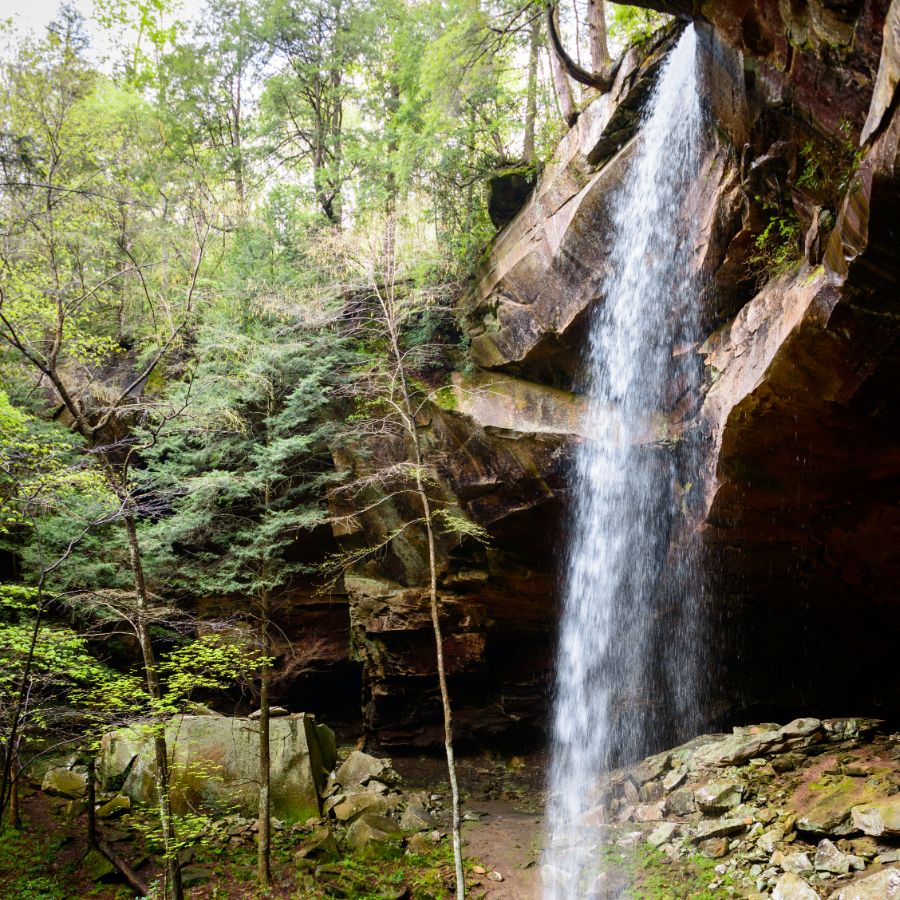
The Big South Fork National River and Recreation Area protects over 125,000 acres of rugged plateau country. This unique landscape features deep gorges carved by ancient rivers. Sandstone bluffs rise above winding waterways while dense forests cover the surrounding terrain.
Rocky outcrops and cliff faces create microclimates with different growing conditions. These environmental variations allow multiple truffle varieties to coexist in relatively small areas.
Concentrate your search efforts in the rich bottomlands along major waterways where nutrients accumulate. Look for truffles beneath sycamore and river birch trees that thrive in these moist environments. The Honey Creek area provides excellent opportunities with its mix of bottomland hardwoods and consistent water sources.
Land Between the Lakes National Recreation Area
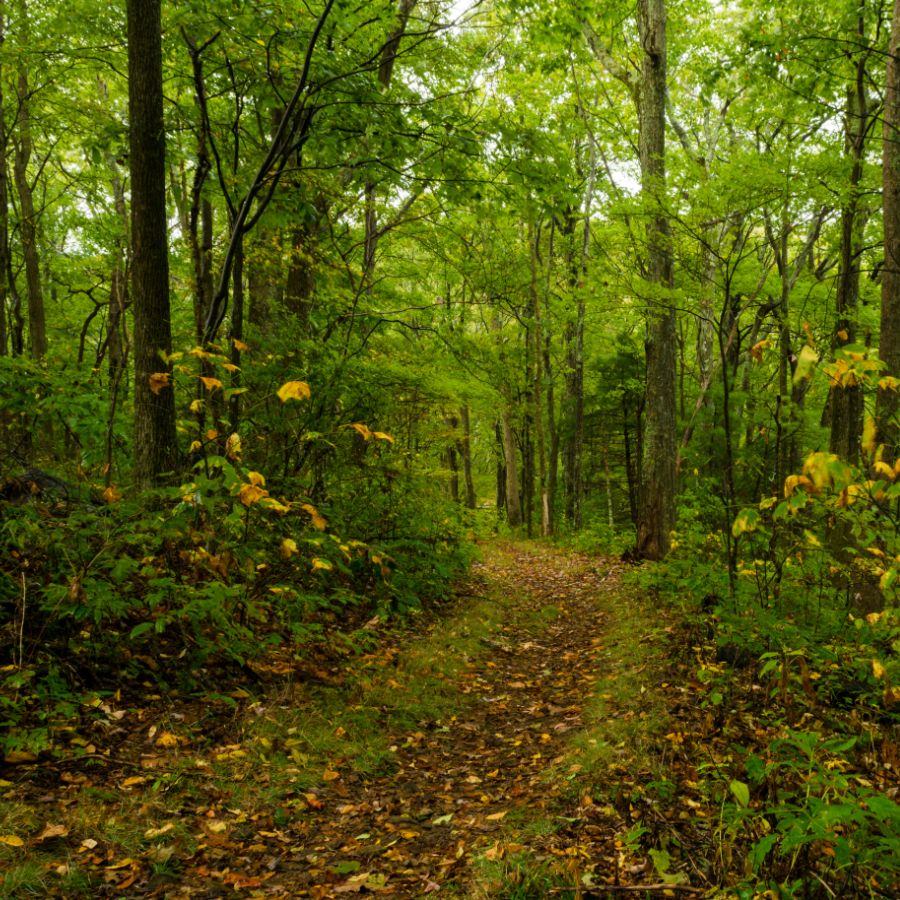
Land Between the Lakes National Recreation Area sits between Kentucky Lake and Lake Barkley in western Tennessee and Kentucky. This 170,000-acre peninsula was created when the Tennessee and Cumberland rivers were dammed.
The peninsula’s unique geography creates interesting soil conditions influenced by its lakeside location. The soil retains moisture well due to the surrounding water bodies. This consistent moisture helps support healthy truffle populations throughout the growing season.
Target your searches in areas where small ravines and draws collect rainwater runoff. Look beneath established groves of white oak and red oak trees, particularly those growing on gentle slopes. The Energy Lake area offers prime hunting territory with its combination of mature hardwoods.
Other Great Locations For Truffles
East Tennessee
| Location | Collection Guidelines |
|---|---|
| Blackberry Farm, Walland | Private estate with truffle orchards; guests may join scheduled foraging tours. |
| Cherokee National Forest | Small quantities may be collected for personal use on most non-restricted lands. |
| Chuck Swan State Forest | Truffle collection for personal use is allowed with responsible harvesting practices. |
| Frozen Head State Park | Foraging allowed in designated non-sensitive zones during non-wet seasons. |
| House Mountain State Natural Area | Truffle collection permitted near trail edges; avoid protected plant zones. |
| Indian Mountain State Park | Truffle foraging allowed off main paths in mixed hardwood sections. |
| Laurel-Snow State Natural Area | Small-scale foraging allowed outside wildlife observation areas. |
| Norris Dam State Park | Permitted in upland woods; avoid high-traffic public areas. |
| Panther Creek State Park | Foraging permitted along lesser-used trails with minimal disturbance. |
| Roan Mountain State Park | Truffle collection allowed during dry months in oak-pine forest areas. |
| Seven Islands State Birding Park | Discreet foraging allowed along wooded margins, not in bird habitats. |
| South Cumberland State Park | Allowed along forest trails; not near waterfalls or caves. |
| Sycamore Shoals State Historic Park | Permitted in open woodland; avoid historic sites. |
| Warriors’ Path State Park | Allowed on ridgeline paths where hardwood forests are common. |
Middle Tennessee
| Location | Collection Guidelines |
|---|---|
| Bledsoe Creek State Park | Foraging allowed in mature forest sections away from picnic zones. |
| Cedars of Lebanon State Park | Permitted within cedar glades; remain outside protected research plots. |
| Couchville Cedar Glade | Careful foraging allowed in shaded edges of glade forests. |
| Dunbar Cave State Park | Only outer forest edges; caves and sensitive wetlands excluded. |
| Edgar Evins State Park | Collection permitted along northern hiking trails in oak woods. |
| Fall Creek Falls State Park | Foraging allowed around upland hardwoods away from falls basin. |
| Harpeth River State Park | Permitted along river bluff trails during low visitation hours. |
| Henry Horton State Park | Allowed in drier parts of the park away from campgrounds. |
| Long Hunter State Park | Permitted in backcountry zones; avoid shoreline ecological study areas. |
| Montgomery Bell State Park | Allowed along historic forest paths with low foot traffic. |
| Mousetail Landing State Park | Foraging permitted near old growth sites uphill from lake trails. |
| Natchez Trace State Park | Allowed around ridges and pine mix forests. |
| Old Stone Fort Park | Foraging allowed in external wooded zones, not near archaeological mounds. |
| Radnor Lake Natural Area | Discreet foraging allowed in designated quiet forest trails. |
| Rock Island State Park | Upland wooded trails permit collection away from gorge edges. |
| Savage Gulf Natural Area | Permitted in plateau hardwoods distant from gorge trails. |
| Standing Stone State Park | Foraging permitted under mature hardwood canopy in loop trails. |
| Tims Ford State Park | Collection allowed in shaded forest groves distant from lakefront. |
West Tennessee
| Location | Collection Guidelines |
|---|---|
| Big Hill Pond State Park | Permitted along dry ridge trails and older pine-hickory areas. |
| Chickasaw State Park | Allowed in less trafficked forest margins near group camp zones. |
| Fort Pillow Historic Park | Collection allowed in non-historic forest paths. |
| Meeman-Shelby Forest State Park | Permitted in upland hardwoods, not near swampy regions. |
| Natchez Trace State Forest | Allowed in open tracts used for timber regeneration. |
| Pinson Mounds Park | Truffle foraging allowed on wooded outskirts; avoid mound areas. |
| Reelfoot Lake State Park | Collection permitted inland from swamp forests during dry season. |
| T.O. Fuller State Park | Permitted in backwoods loops away from recreational fields. |
When The Best Time Of The Year Is To Find Truffles
Most truffle hunters in Tennessee focus their efforts during the cooler months when conditions are most favorable. Late fall through early spring provides the optimal window for truffle hunting success. Cool temperatures and increased moisture levels during this period support active truffle growth.
October marks the beginning of prime truffle season, with activity continuing through March. Winter months often yield the best results as truffles reach peak maturity. January and February are particularly productive for finding high-quality specimens.
Spring hunting can extend into April, especially in mountainous regions where temperatures remain cooler longer. Summer months generally prove less successful due to hot, dry conditions that make truffles harder to locate and of lower quality.
One Final Disclaimer
The information provided in this article is for general informational and educational purposes only. Foraging for wild plants and mushrooms involves inherent risks. Some wild plants and mushrooms are toxic and can be easily mistaken for edible varieties.
Before ingesting anything, it should be identified with 100% certainty as edible by someone qualified and experienced in mushroom and plant identification, such as a professional mycologist or an expert forager. Misidentification can lead to serious illness or death.
All mushrooms and plants have the potential to cause severe adverse reactions in certain individuals, even death. If you are consuming foraged items, it is crucial to cook them thoroughly and properly and only eat a small portion to test for personal tolerance. Some people may have allergies or sensitivities to specific mushrooms and plants, even if they are considered safe for others.
Foraged items should always be fully cooked with proper instructions to ensure they are safe to eat. Many wild mushrooms and plants contain toxins and compounds that can be harmful if ingested.

